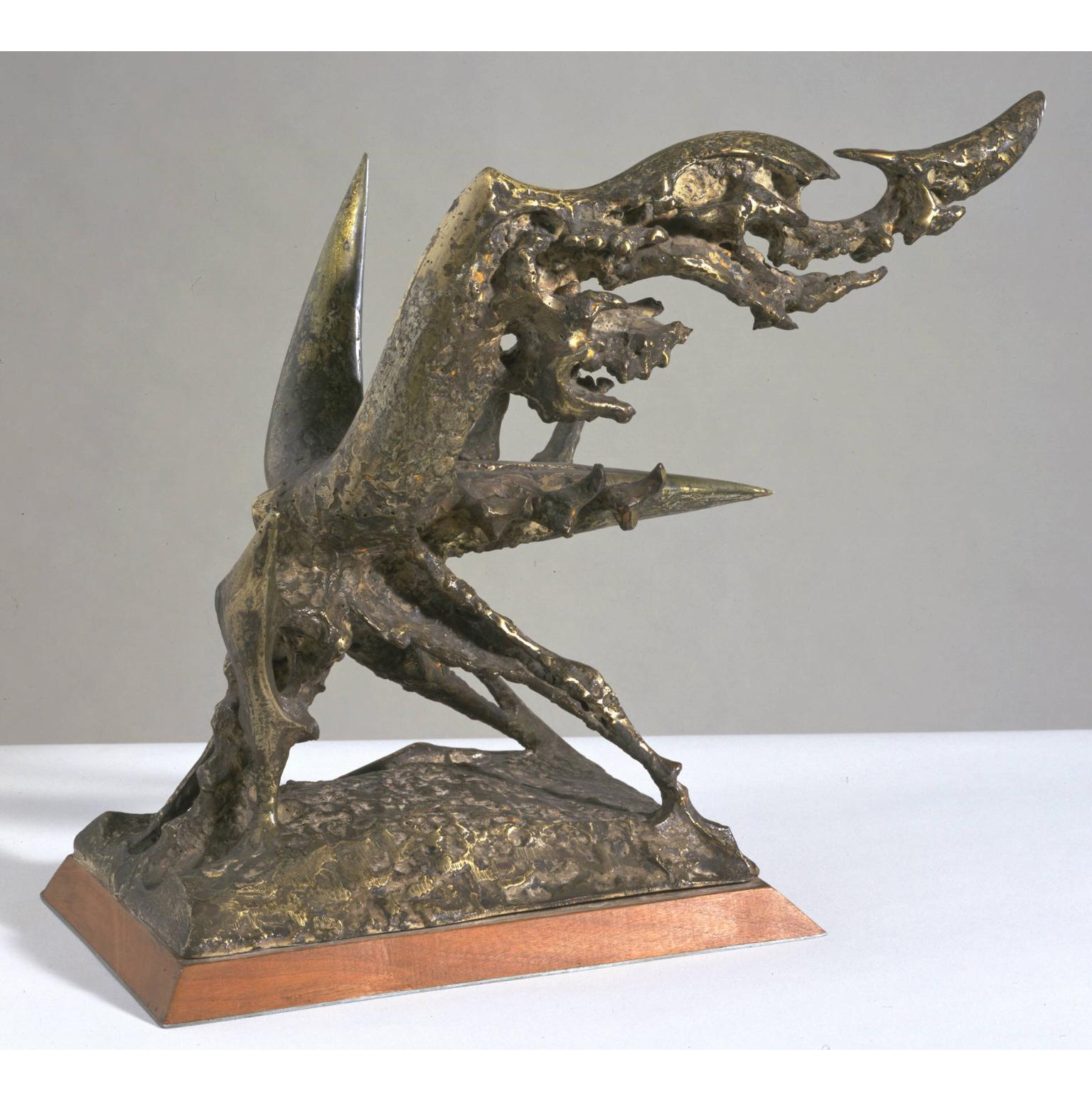Monument to Unknown Political Prisoner, 1952
" I thought that the monumental aspect of a project of this kind would have to be affirmative. I couldn't believe that a man imprisoned and held prisoner, hostage, against his own desires could give rise to the same kind of objective monumentality as a man who would be perfectly willing to sacrifice himself for his political belief. When I wrote to Sir John about this, I tried to point out that where everyone tried to stress the negative aspects of the theme of the political prisoner, they had all kinds of bars and forms of incarceration, which are negative aspects, even though they are probably true. To me it was necessary to give it this thrust of defiance, and then the wings and flourish of triumph. Therefore, the sub-title consideration to the whole theme of the political prisoner in this case became one of defiance and triumph, actually standing up for one's political beliefs."
[Theodore Roszak interview with Elliott, 1956, p. 22-23]
Joan Marter, "The Ascendancy of Abstraction for Public Art", Art Journal, Winter 1994, Vol. 53 No.4.


Study for the Monument to the Unknown Political Prisoner, 1951-52
Pen, ink and sepia wash on paper
25 1/2 x 42 1/4 in. (64.8 x 107.3 cm)
Montclair Art Museum, New Jersey Collection. (2004)

Monument to Unknown Political Prisoner Study, 1959
drawing, ink, indian ink on paper
27.4 x 33.7 inches (69.7 x 85.6 cm)
Collection: National Museum Warsaw, Poland.

Study for Monument for an Unknown Political Prisoner
1951
Ink and wash
10 15/16 x 13 7/8 in.
Collection: Museum of Chazen. Madison, Wisconsin. Terese and Alvin S. Lane Collection (2012 on loan).

Two Studies- Monument to an Unknown Political Prisoner and Reynolds Memorial, 1954
Pen, ink, and wash on paper
12 1⁄4 x 10 inches (311 x 254 mm)
Location: The Morgan LIbrary & Museum, NY. Gift of Sara Jane Roszak, Estate of Theodore Roszak (2007),
